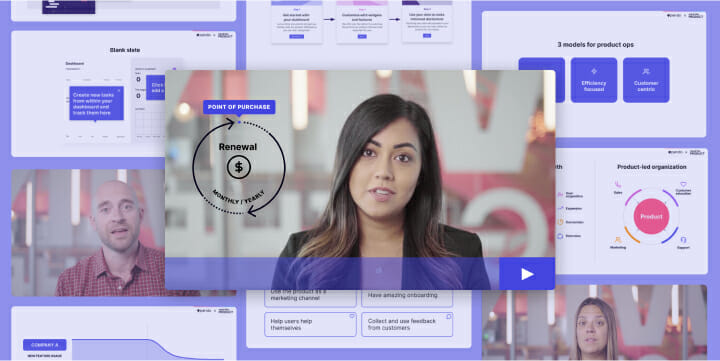Sunsetting a product, poor performance, telling leadership something they won’t want to hear — these are all tricky conversations that many of us have to have. Difficult conversations come with the territory when you’re a product leader, so what’s the best way to handle them?
In this post, we’re guided by Denise Jacobs, the author of Banish Your Inner Critic, on how to handle five challenging conversations.
In brief
- Before you set up the conversation you need to have, prepare for it. Be clear on what you want to say and be aware of your biases.
- During the conversation, be open to all possibilities, stay present and listen.
- Reassure the person you’re having the conversation with and make sure the conversation is two-way.
- Lay out facts as fully, leaving your opinions out of the conversation, and recognise where you need to be empathetic to the other person’s situation and point of view.
- Focus on the positives and learning, and have a clarifying contrast statement to the difficult topic
Before you have a difficult conversation
Before you take any action, manage what’s in your head. “It’s really easy to get yourself psyched up that the conversation will be difficult and go a certain way. But that may not be how it will go at all,” Denise says. “Be aware of things that you may bring to the conversation that may or may not be there. Be aware of your biases.”
Don’t go into the conversation with a specific outcome in mind, stay open to other possibilities. It can be helpful to put things down on paper — write down the worst-case scenario and work out how you deal with it. Denise’s post Breaking the Perfectionism-Procrastination Infinite Loop gives details of an exercise called Best/Worst/Real that can help you with this issue. Says Denise: “You can be so focused on what you’re afraid might happen in the conversation that you’re not actually present and paying attention. I always tell people to take notes and ask clarifying questions because they help you to stay present and think about what’s being said.”
A difficult conversation may well be easier if you can show empathy. Denise says we should be mindful that the pandemic has affected how people hear feedback — they’re stressed and remote working causes negativity bias to get stronger. It’s always a good idea to start by inviting the other person to talk, she says, so instead of ‘I want to talk to you about this report’, say, ‘how did you feel about this report?’. Then if they bring up your area of concern, it’s easier to address. And remember that we’re more receptive to criticism if we first hear appreciation — but if you’re going to express appreciation then do make it specific and concrete, otherwise, as Denise says, it won’t stick.

“In fact, when you tell people anything that may be difficult, make sure that you have a clarifying contrast statement,” she says. “Otherwise people infer. It can be just one thing that they notice and run off with and then it’s all they remember. We all do it. So it’s important to have that clarifying contrast statement.” In other words, end your part of the conversation with ‘what I’m NOT saying is X. What I AM saying is Z’.
The one about performance or letting someone go
If the conversation is to address concerns about someone’s performance, start by asking how they think they’re doing. It gives them the opportunity to tell you what they enjoy and what they struggle with, and to have a two-way conversation. “They may be unaware they’re performing poorly, there are plenty of people like that,” says Denise. “Maybe they’ve never been told otherwise, or they’ve been coddled and protected.” Then, if someone is being let go because of performance issues, the conversation should be the end of a long road, and no surprise to anyone.
If someone is being let go because of reorganisation then you should reassure them that it’s not a performance issue — if the company’s struggling financially then you should be honest about it, Denise says. Make sure you offer every support the company has available like career counselling, placements, written recommendations (if appropriate) and the like.
The one about sunsetting a product
While we’d all love to work in an environment where there’s complete trust and transparency, in reality this isn’t the case for many companies. “Often nothing is said, and then all of a sudden, it’s a surprise when a product is shut down,” says Denise. Maybe there were rumours and speculation, or the numbers were down, but nothing was openly discussed. Denise says that she’s always surprised by how often people get caught out, because they forget that “nothing lasts forever”.
Denise suggests you work out the positive spins when shutting down a product: “You must acknowledge the loss and acknowledge the end, because people grieve when things complete. But also focus on what was gained from the experience, the knowledge gained that they can apply to something else, and what they can look forward to.”
Acknowledge the loss and acknowledge the end, because people grieve when things completeDenise Jacobs
The one where you explain that another team’s request won’t make the roadmap
This one is not dissimilar to sunsetting a product — the idea or concept might not fit in terms of time, effort or the long-term goals of the product.
If the business has a 20% time policy, you might suggest that the team uses this time to see if they can take a different direction with the work.
Denise also suggests that you establish what she calls “a parking lot” for ideas that could be revisited at a later date.
The one with leadership that they won’t like the answers to
This is a tough conversation partly because the power dynamic is different from other conversations. But as Denise points out, a CEO can’t possibly know the details about everything under their remit. So you should remember that the CEO will most likely appreciate your candour if you tell them something is not going well: “The more information you can give, the more you can lay out the situation, the better, as it means leadership can make an informed decision.”
Lay out the facts as fully as you can and leave your opinions out of the conversation. And, to be mindful of how many decisions leadership has to contend with, think through with your team the potential options which might provide a way forward and present them as well.
The one with a staff member about the promotion they wanted but won’t be getting
How do you navigate this conversation so that the staff member still feels valued, and that they’re not wasting their time? There can be many reasons why you decide someone should not be promoted, but again it’s important to show appreciation of the work they’ve done and to give them options and potential ways forward. “Ask ,’what did you envisage, what were you shooting for with this promotion’,” says Denise, “and ask how you can replicate it in a different context so that they become a stronger candidate in the future.”
More from Denise Jacobs
For more on this topic from Denise watch her 2020 #mtpcon Digital session on having difficult conversations with confidence. And even more insights from Denise, watch her 2019 #mtpcon San Francisco keynote, Banish Your Inner Critic. Denise Jacobs answers the question: What blocks us from doing our best work?
Share your advice
If you have tips on how to handle conversations like those mentioned above you can share them with other MTP Leaders. Type your tips below or go to the chat on the community discussion platform:







Comments
Join the community
Sign up for free to share your thoughts